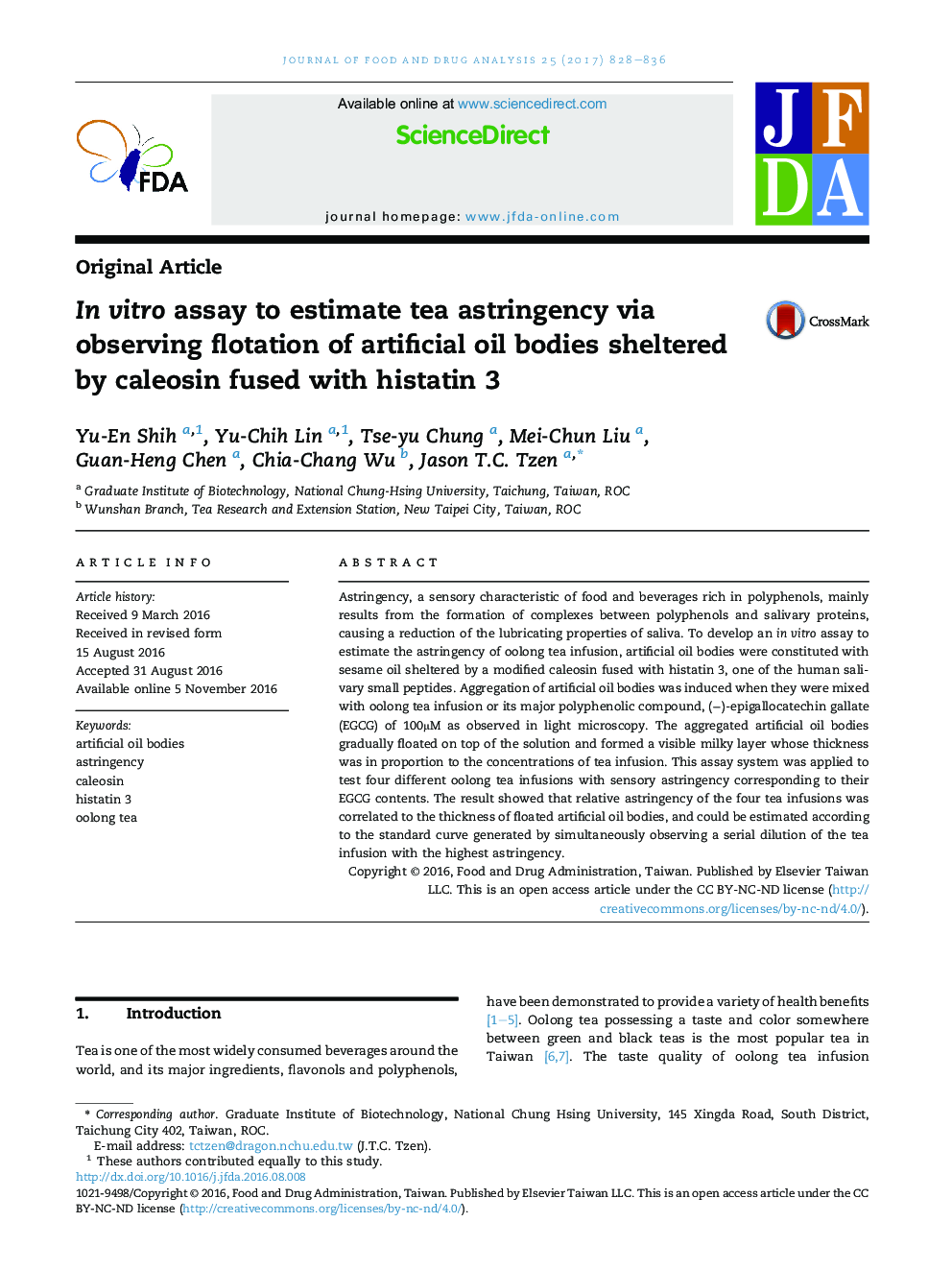| کد مقاله | کد نشریه | سال انتشار | مقاله انگلیسی | نسخه تمام متن |
|---|---|---|---|---|
| 5550996 | 1557716 | 2017 | 9 صفحه PDF | دانلود رایگان |

- An in vitro assay was developed to estimate the relative astringency of oolong tea.
- Oil bodies were constituted with oil and caleosin fused with a human salivary small peptide.
- Relative astringency of tea was estimated by measuring the thickness of floated oil bodies.
Astringency, a sensory characteristic of food and beverages rich in polyphenols, mainly results from the formation of complexes between polyphenols and salivary proteins, causing a reduction of the lubricating properties of saliva. To develop an in vitro assay to estimate the astringency of oolong tea infusion, artificial oil bodies were constituted with sesame oil sheltered by a modified caleosin fused with histatin 3, one of the human salivary small peptides. Aggregation of artificial oil bodies was induced when they were mixed with oolong tea infusion or its major polyphenolic compound, (â)-epigallocatechin gallate (EGCG) of 100μM as observed in light microscopy. The aggregated artificial oil bodies gradually floated on top of the solution and formed a visible milky layer whose thickness was in proportion to the concentrations of tea infusion. This assay system was applied to test four different oolong tea infusions with sensory astringency corresponding to their EGCG contents. The result showed that relative astringency of the four tea infusions was correlated to the thickness of floated artificial oil bodies, and could be estimated according to the standard curve generated by simultaneously observing a serial dilution of the tea infusion with the highest astringency.
294
Journal: Journal of Food and Drug Analysis - Volume 25, Issue 4, October 2017, Pages 828-836